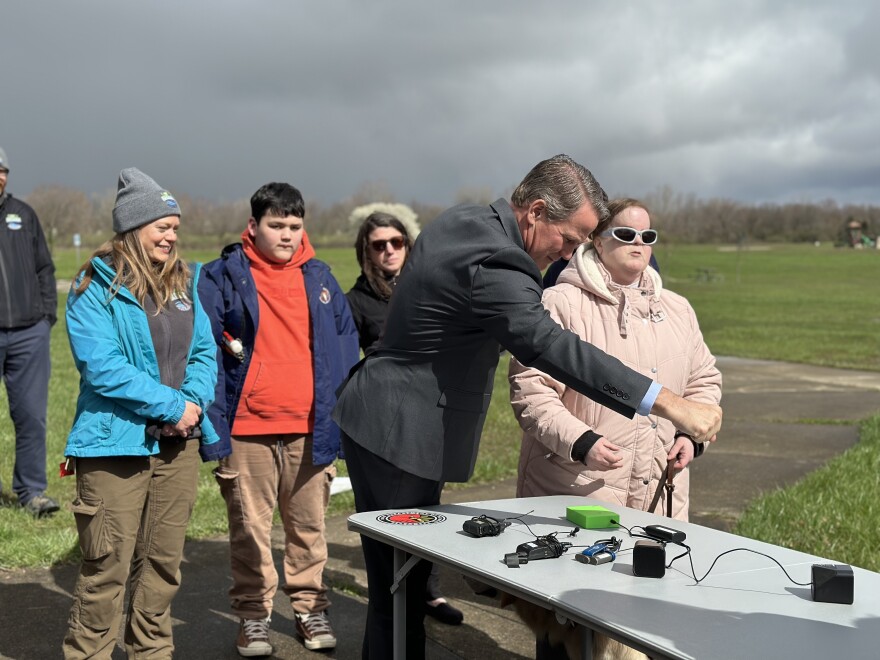When the moon fully eclipses the sun through parts of the state Monday, most viewers will shift their eyes to the sky. Some low and no vision Ohioans, however, will be using another physical sense to fully take in the astronomical event: their ears.
The LightSound, a project out of Harvard University, converts light intensity to melodic tones that sound like a mix of a flute and a clarinet. When the tiny plastic device senses less direct sunlight through a circular sensor, bassier tones begin to ring out.
In 2017, only three existed. But 7 years later, as the country prepares for another solar eclipse to pass through, more than 700 are in place for the astronomical event. Of them, 29 will be found at Ohio Department of Natural Resources properties in the path of totality, and two more will be found at National Park properties in western Ohio.
In January, ODNR Director Mary Mertz’s executive assistant was skimming a print National Geographic magazine when she came across a page with a headline: “You can now listen to an eclipse. Here’s how.”
“There was a tiny little article about this, and she walked in and she said, ‘Hey, I think you’ll be interested in this,’” Mertz said.
Mertz was interested, and so was Kevin Miller, the executive director of Opportunities for Ohioans with Disabilities.
At times buffeted by wind and hail, alongside Lt. Gov. Jon Husted, they demonstrated the devices at Alum Creek State Park on Thursday with students from the Ohio State School for the Blind.
“It's kind of a day of celebration, something that's literally a once in a lifetime event,” Husted said. “These LightSound devices are going to help those with low vision or no vision have a chance to participate.”
Bigger picture, he said it's pulling disabled Ohioans in. “Technology can do that,” Husted said.
According to ODNR, a 124-mile portion of the state is in the path of totality—crossing southwest to northeast.



